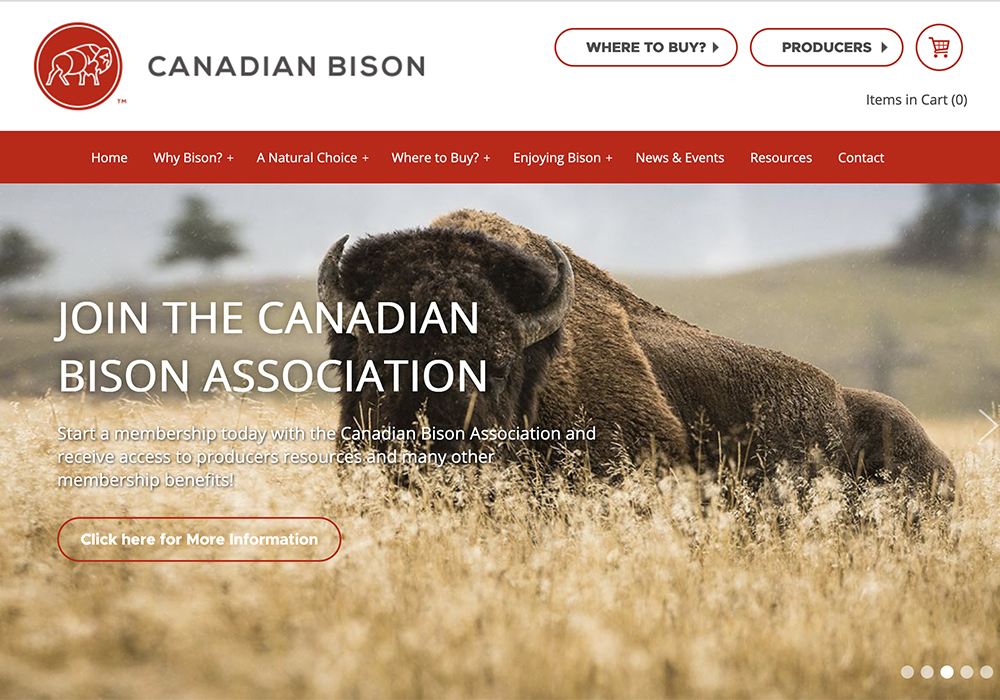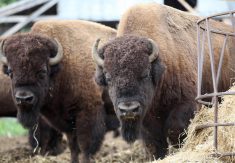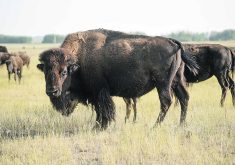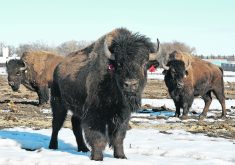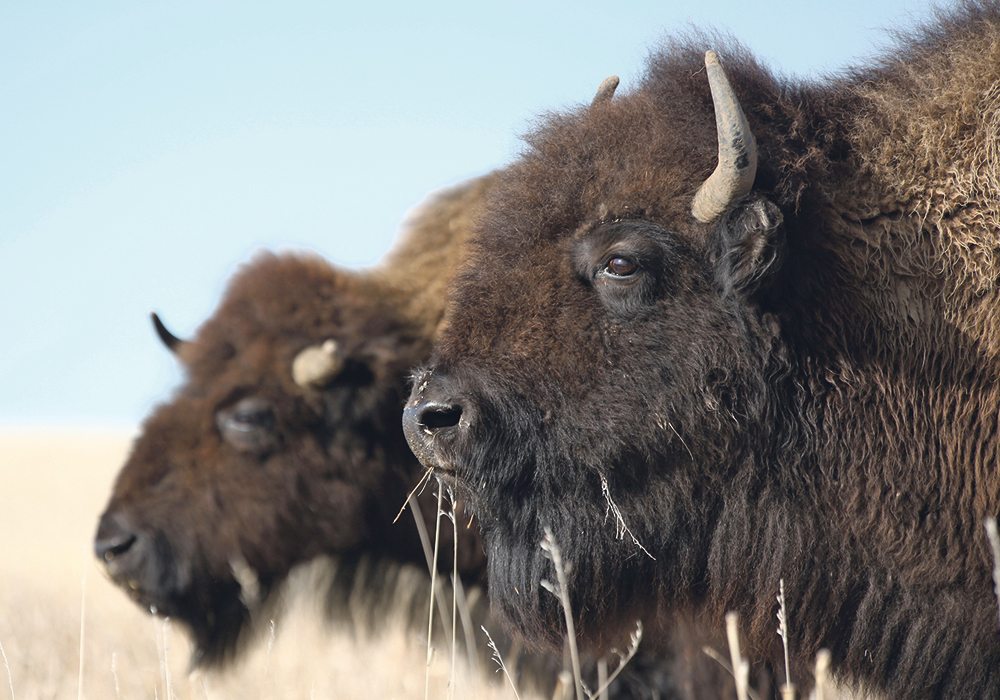For two decades the Canadian Bison Association leader navigated BSE, processing, trade, markets and growth
Terry Kremeniuk retired the first time in 2003. Nearly 20 years later, he retired again.
There could even be a third retirement in his future because he will likely find something else to do.
“He has to be busy,” said his wife, Sharon.
Kremeniuk had a full career of more than 31 years at Farm Credit Canada before spending 19 years as the executive director of the Canadian Bison Association. That’s about half of the organization’s history.
“I made a five-year commitment,” he laughed during an interview in fall.
Read Also
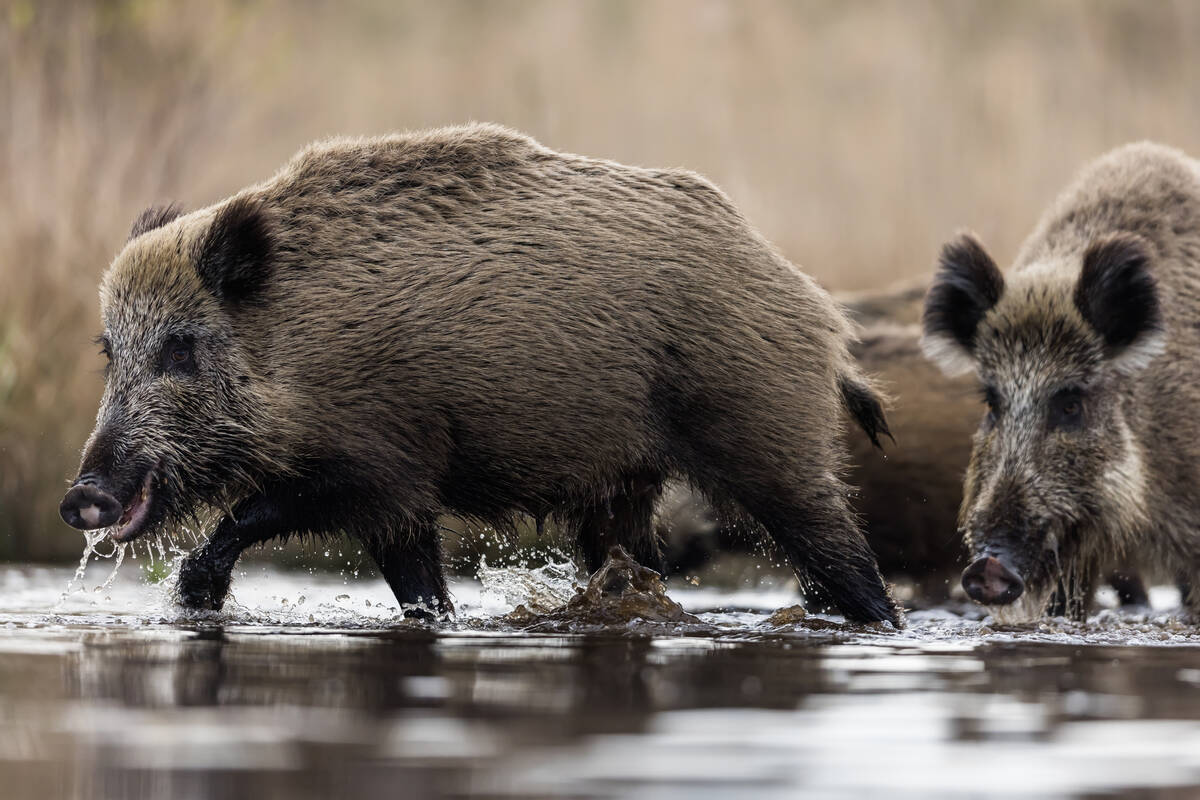
Manitoba bans wild boar possession
Manitoba has tightened the regulatory status of Eurasian wild boar in an effort to help fight back against invasive wild pigs.
But in 2003, the bison industry was a fascinating place to be, with lots of work to do, he said, particularly for someone looking for a new challenge.
Kremeniuk was raised on the family cattle operation at Evansburg, Alta., which his brother now runs. He graduated from the University of Alberta with an economics and animal science degree in 1971.
He began work at Lakeside Feeders as a salesperson, but soon joined FCC and moved to Alberta’s Peace Country before taking a couple of years off to get an MBA from the University of British Columbia in 1976.
He spent the next 16 years with FCC in Ottawa.
When the government moved the lender to Regina in 1992, Kremeniuk took charge of the move. He spent 25 years on the senior management committee before retiring.
He and Sharon also raised three children and now have five grandchildren.
But it wasn’t long before the CBA called. The executive director had left and a new president was coming in.
The industry was dealing with border closures from BSE and needed someone with connections in Ottawa.
Although a western Canadian association had formed in 1971 and the national organization incorporated in 1982, it was still very much a sector in infancy.
Kremeniuk’s five-year commitment lasted until this fall.
“What made me stay was the people,” he said. “It was a unique industry, a new industry, not even 50 years old from a commercial perspective.”
Another reason was the challenge. While the national cattle organization, for example, had money and a staff in charge of various aspects of the industry the CBA had him.
“What I found just intriguing was one minute I’m on the phone talking to a producer about suggestions to improve traceability or tags and the next minute I’m talking to somebody in Ottawa about a trade issue with the (European Union),” he said.
There were definitely tough times but he points to the bison price trend line as evidence the industry survived and thrived.
He gives much of that credit to Mark Silzer, the Saskatchewan producer who was also the CBA president from 2004-16.
Bison numbers escalated rapidly in those first years, a situation Kremeniuk said was a function of producers hanging on to animals they normally would have shipped.
“It’s all because of BSE. They couldn’t sell their animals. We couldn’t ship them to the (United States) and it was an unnatural increase in the herd numbers,” he said.
The EU market did remain open, which saved the industry from going completely under, but the U.S. market is the strongest in the world for bison.
The Canadian bison population in 2001 was 144,950; by 2006 it was 195,728. After a drop when markets re-opened the number was about 150,000 in 2021.
Currently, about 1,000 producers report bison to Statistics Canada and the average herd size is about 150 head.
There are large ranches of thousands of head in British Columbia. At one time, B.C.’s Peace region had about half the bison in the country.
Kremeniuk said he wants to dig down census district numbers to see exactly where the bison are.
Slaughter capacity has always been an issue in Canada. A few Canadian producers have stakes in a North Dakota plant. Others ship to Denver.
The development of a strong relationship with American producers is one of the things Kremeniuk considers a highlight of his career.
Another is recognizing the power in partnerships with other sectors, such as the cattle industry, and other producer organizations.
The current focus on regenerative agriculture acknowledges that both cattle and bison work to maintain grasslands and soil health.
The conservation community is also among those partnerships.
“When I first started, I was pretty naïve in terms of some of the issues, but I think over time we’ve gone a long way to recognize that we’ve got animals in parks and we’ve got animals in commercial herds and it’s the animal that bring us together and everybody is better off,” he said.
He also developed a strong connection with indigenous communities working to establish themselves in agriculture.
Kremeniuk sat on the board of the Saskatchewan Indian Equity Foundation for nearly 20 years and was recently presented with a blanket for his work.
Closer to home, the development of the bison benchmarking project about 13 years ago provided valuable information to producers and investors. That project gathered production and financial performance to help producers understand where they are at.
More recently, the bison industry’s dive into genomics will benefit the industry in the future, he said.
People have been differentiating wood and plains bison by observation, but using science and genomics is offering a greater understanding of the genetic inventory of bison, Kremeniuk said.
He will be watching those developments even though he has moved on.
“When I left Farm Credit, I had just turned 54 and what made me make the move is, when I started in Ottawa, I was one of those filled with energy, did a lot of things, developed a number of different programs, and then I saw that the programs were being changed and enhanced and they were no longer mine,” he explained. “You have to have the wisdom to know when to leave because if you don’t leave, somebody is going to push you out.”


